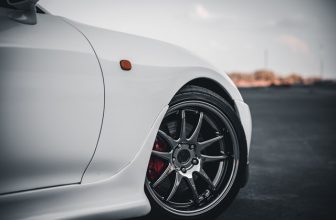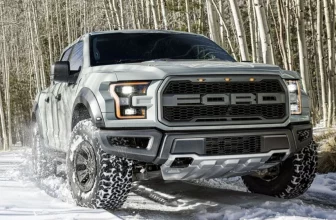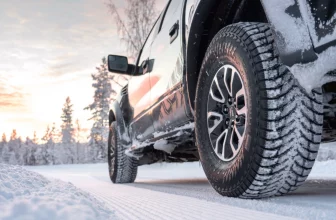How do you approach the fragile driving conditions in winter? Do you have a solid plan to maximize the performance of your treasured internal combustion engine or electric vehicle when the weather changes from mild winter into the harsh conditions at the peak of this season?
Did you gain some lessons from the previous winter season? Perhaps the past few seasons have been blissful because you own reliable sets of winter tires. For other drivers, you are still comparing options to break free from the horrors of winter driving. Whichever the case, each driver deserves a balanced car performance.
It doesn’t matter if it is the beginning of winter, somewhere in the middle or the tail end of the season. Drivers can choose from different tire brands and categories of winter tires. For non-aggressive winter driving experiences, studless ice and snow tires can pretty much calm your worries.
Imagine driving at usual speeds on slippery roads or over a snow-covered road with the confidence that your vehicle will be responsive throughout the journey. Braking distances are short. By attaining optimum traction levels on slippery winter roads, drivers can confidently stop vehicles quickly.
Emergency braking on wintry roads is among the leading causes of accidents as braking efficiencies decrease significantly. The best studless ice and snow tires offer excellent snow traction, responsive handling and safety levels. These tires are closely comparable with high performance winter tires and the aggressively-looking studded winter tires.
You may ask, why studless ice and snow tires? Why not use ordinary winter tires? Or perhaps drive on all-season tires as long as the vehicle moves from one point to the next. Well, apart from exposing the car to the strangest driving conditions, you must monitor fuel consumption.
At the same time, focus shifts from locomotion to high safety standards. In this unbiased review, we highlight the key features that appear on studless ice and snow tires, their performance characteristics under different driving conditions and evaluate how reliable they are against other tire categories.
| Tire name | Winter/snow performance | Steering response | Wet performance | Hydroplaning resistance | Wet traction | Dry performance | Cornering stability | Dry traction | Comfort performance | Ride quality | Noise score | Treadwear performance |
|---|---|---|---|---|---|---|---|---|---|---|---|---|
| Bridgestone Blizzak WS90 | 9.3 | 8.4 | 9 | 9.1 | 8.9 | 8.6 | 8.4 | 8.9 | 8.8 | 9.2 | 8.3 | 8.4 |
| Michelin X-Ice Xi3 | 8.8 | 8.4 | 8.8 | 8.8 | 8.8 | 8.5 | 8.4 | 8.8 | 8.9 | 9.1 | 8.7 | 9 |
| Continental VikingContact 7 | 8.8 | 8.3 | 8.7 | 8.7 | 8.8 | 8.5 | 8.5 | 8.6 | 9.2 | 9.3 | 9.1 | 8.6 |
| Bridgestone Blizzak LM-50 RFT | 8.8 | 8.6 | 8.8 | 8.7 | 9 | 8.6 | 8.3 | 9 | 7.7 | 8 | 7.4 | 6.6 |
| Yokohama iceGUARD iG52c | 8.7 | 7.7 | 7.8 | 8.1 | 7.5 | 7.7 | 7.7 | 7.8 | 8.1 | 8.6 | 7.6 | 8.3 |
| Goodyear Ultra Grip Ice WRT | 8.7 | 8.2 | 8.8 | 8.8 | 8.8 | 8.4 | 8.3 | 8.6 | 8.1 | 8.4 | 7.8 | 8.7 |
| Yokohama iceGUARD iG20 | 8.6 | 6.9 | 8.1 | 8.2 | 7.9 | 6.9 | 6.9 | 6.8 | 7.8 | 8.3 | 7.4 | 8 |
Major design features of studless ice and snow tires
Superior tread design for high performance
One of the features that drivers use when choosing tires is the tread design. A meticulous tread design translates to a physically appealing tire. Practically, the tread pattern gives your car an aesthetic look before it delivers on its core mandate providing adequate traction on slippery roads.
During winter, expect varying depths of snow and ice on the road. As if that is not enough, melting snow and ice leave puddles of water on the road. When this happens, the driving habits must change. Sticking to the driving behaviors of summer or warmer climates is a recipe for trouble.
Once snowfall kicks in, drivers should fix the right sets of studless ice and snow tires. After that, they have to exercise extra caution watching out for surface run-offs and monitoring the thickness of snow. The capabilities of studless snow and ice tires are exclusively dependent on the design of the treads.
To put this into perspective, they are the primary contact surfaces with the road and support all vertical loads of a car. These tires, therefore, have sturdy tread patterns that have adequate biting edges. Maintaining traction with the tarmac requires that the tires temporarily displace ice snow on their path. The biting edge parts snow and ejects any snow that gets stuck within grooves.
Studless ice and snow tires use a unique manufacturing method. Instead of one large tread layer, manufacturers deliberately use multiple layers of soft and flexible runner material. As a result, the rubber layers beneath the tread provide extra reinforcement that strengthens the contact patches.
This design feature trades off comfort capabilities to optimize the amount of traction on ice and wet roads. Technically speaking, these tires offer excellent ice traction and rank above most winter tires.
Sufficient circumferential grooving
For an ultimate winter driving experience, tires need to combat several challenges at a go. As the treads pierce loosely and hard-packed snow and ice surfaces, the tire put in extra effort to expel any flowing water. Imagine a scenario where you are battling with apparent hydroplaning and unresponsive handling since your tires do not have enough grip on the road.
It is a delicate situation that exerts real pressure on the driver, experienced or not. Engineers devised a clever design of the grooves of studless ice and snow tires. Keep circumferential grooves as deep as possible and optimize angular connections to lateral grooves.
As a result, the tire evacuates a substantial amount of water and sends it far from the base of the tire. With this design, the tires retain a constantly wide contact patch with the road.
The benefits of these grooves are immeasurable. Sufficient traction via the contact patches ensures that drivers take maximum control over the vehicle. There is no room for the tires to resist driving inputs nor exert insufficient rolling resistance when engaging brakes.
Pros & Cons of studless ice and snow tires
Studless ice and snow tires over studded winter tires
Studded winter tires are not as common as studless ice and snow tires. Both categories are high performance winter tires. They are dependable in medium to deep snow and ice. But why do most drivers have studless winter tires?
The answer is simple. The use of studded winter tires is restricted to specific states in the US. Only a few countries approve of the use of studded winter tires on highways in extreme weather.
Are studless ice and snow tires better than other tire categories?
This section compares the performance of studless ice and snow tires for winter driving only. For a start, we know that studded winter tires provide slightly better performance on snow and ice. All-season tires can offer dependable performance and handling on snowy roads.
However, they perform poorly over deep snow. The other close competitor is the performance winter tires. This category balances safety, handling and comfort. Thus, they are reliable in light snow but a little unreliable in deep snow.
Frequently asked questions
Can I substitute studless ice and snow tires with the more aggressive studded winter tires?
It is possible. However, there are restrictions to it. Confirm local legislation before embarking on this. Also, note that studded winter tires provide excellent handling and responsive driving in deep snow only. You may end up struggling when driving on shallow snow.
Are studless ice and winter tires good for driving in summer?
No. Never use winter tires in hot weather. The rubber materials used for the manufacture of studless ice and winter tires are adapted for cold seasons only. In summer and hot weather, the tires will wear out fast and cannot provide adequate traction. Alternatively, use all-season tires or specialized summer tires.
Can I substitute studless ice and snow tires with the more aggressive studded winter tires?
It is possible. However, there are restrictions to it. Confirm local legislation before embarking on this. Also, note that studded winter tires provide excellent handling and responsive driving in deep snow only. You may end up struggling when driving on shallow snow.
Are studless ice and winter tires good for driving in summer?
No. Never use winter tires in hot weather. The rubber materials used for the manufacture of studless ice and winter tires are adapted for cold seasons only. In summer and hot weather, the tires will wear out fast and cannot provide adequate traction. Alternatively, use all-season tires or specialized summer tires.






